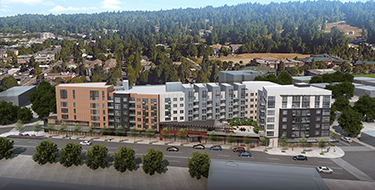|
Subscribe / Renew |
|
|
Contact Us |
|
| ► Subscribe to our Free Weekly Newsletter | |
| home | Welcome, sign in or click here to subscribe. | login |
Environment
| |
 |
September 28, 2017
Survey: Golder Associates
Specialty: Geotechnical, environmental, water resources, cost-schedule risk assessment, seismic, geohazards
Management: Cathy Smith (PNW operations lead), Jim Kleppe (PNW infrastructure lead)
Founded: 1960
Headquarters: Palm Beach, Florida; Redmond (local office)
2016 revenues: $960 million gross (global)
Projected 2017 revenues: $980 million gross (global)
Projects: Sound Transit East Link light rail, Bellevue; WSF Colman Dock renovations, Seattle; Arrive 41-story high-rise, Seattle
Jim Kleppe, PNW infrastructure lead, answered questions about his firm and the design industry.
Q: What are the trends in your industry and your company locally?
A: Golder works in many sectors: development, transportation, water, manufacturing, mining, power, and oil and gas. Each sector has its ups and downs, but it’s interesting to see the development and transportation sectors in the PNW being strong at the same time. Water, power and manufacturing seem steady while mining and oil and gas seem poised to rebound from their downturns.
A consistent trend in each sector seems to be that many clients/owners are willing to tackle more difficult projects and sites — in part because of a need and in part because the location is more important than some of the existing characteristics of the sites/alignment.
Q: What is driving the local development sector’s continuing expansion?
A: Clearly the increased employment in Seattle, notably the technology sector, is driving growth with significant ripples to other industries. Transit-oriented development is also a factor and will continue to be a factor as Sound Transit continues its expansion. WSDOT’s program to improve its assets is also fueling employment and new development that can take advantage of improved highways.
Q: What challenges have you faced on recent projects?
A: This development cycle has included construction on sites with various challenges, and hence opportunities. For example, the size of some sites has influenced the placement of tower cranes, such as at the Arrive high-rise in Seattle, when the crane was adjacent to the excavation and influenced shoring design. Also, due to unforeseen circumstances, that shoring design and excavation had to remain in place for many months longer than anticipated and performed exceedingly well.
We also had a mixed-use site outside the major urban areas where the owner chose to build over a former quarry that had been infilled with thick and soft/loose soils, resulting in the need for a ground improvement strategy. And more buildings are going below the water table, which can offer challenges to waterproofing, water control, and in some municipalities, water quality.
Q: Which sectors will drive your business?
A: We’ll be active in all the sectors listed above in our PNW operation — though we expect the development sector to be peaking. Most folks in the development sector I’ve spoken to expect development to peak in the next 12-18 months. Thankfully, WSDOT and Sound Transit work will be strong for the foreseeable future.
Q: What do you enjoy most about coming to work?
A: We are in the people business — people helping people solve problems and create opportunity. I love the opportunity each day to work with a variety of people to make things happen.
Other Stories:
- Working around an unworkable Voluntary Cleanup Program
- Survey: Farallon Consulting
- Survey: Herrera Environmental Consultants
- Survey: Aspect Consulting
- Fish barrier fix: Take a cue from Henry Ford
- Is Seattle’s Living Building Pilot Program ready to take off?
- Kalama methanol plant will fight climate change
- Water for rural development: tapping the Hirst ruling
- Going below the surface for better watershed health
- 30 years and beyond: caring for landfills post closure
- Survey: Environmental Science Associates



